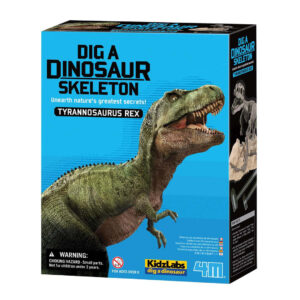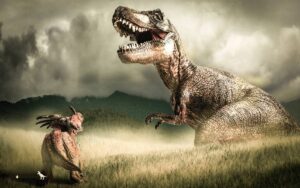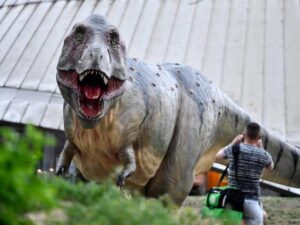What Dinosaur Was an Omnivore
In the vast prehistoric world where the line between carnivores and herbivores seems distinctly drawn, isn't it fascinating how some dinosaurs blurred these boundaries? The omnivorous dinosaurs, creatures that dined both on plants and other animals, present a captivating aspect of dinosaur ecology. Among them, the Oviraptor—often dubbed the 'egg thief'—stands out for its controversial diet.
However, its eating habits are just one piece of the puzzle. As we embark on a journey through the lives of these versatile eaters, one can't help but wonder how their dietary flexibility influenced their survival and evolution. What secrets do their fossils hold about the ecosystems they thrived in?
Key Takeaways
- Oviraptor, Ornithomimus, Therizinosaurs, Gallimimus, Heterodontosaurus, and Psittacosaurus are examples of omnivorous dinosaurs.
- Omnivorous dinosaurs had unique anatomical features, such as dental morphology, supporting their diverse diet.
- These dinosaurs exploited a wide range of food sources, enhancing their survival and adaptability.
- Evidence from isotopic analysis and wear patterns on teeth provides insights into their omnivorous dietary habits.
The Omnivorous Dinosaur Overview
The concept of omnivory among dinosaurs challenges traditional classifications, revealing a complex dietary flexibility that necessitates a reevaluation of their ecological roles. This insight disrupts the simplistic predator-prey dynamic previously ascribed to these ancient creatures, suggesting instead a nuanced interaction with their environments.
Omnivorous dinosaurs, capable of consuming both plant and animal matter, demonstrate an adaptive advantage in varied ecosystems, indicating a sophisticated level of dietary strategy not initially attributed to them. This versatility likely contributed to their evolutionary success, enabling survival across diverse habitats and climatic conditions.
Such revelations underscore the importance of a multidisciplinary approach in paleontological studies, integrating evidence from dental morphology, isotopic analysis, and sedimentary context to unravel the dietary habits of these extinct species.
Defining Dinosaur Diets
To accurately classify dinosaur diets, it's essential to examine the evidence that distinguishes herbivores, carnivores, and omnivores among these ancient creatures.
The concept of omnivorous dinosaurs introduces complexity into our understanding, as it requires a nuanced analysis of dental, skeletal, and coprolitic data to identify species that consumed both plant and animal matter.
This discussion aims to illuminate the methodologies and findings that underpin our knowledge of dinosaur feeding behaviors, with a particular focus on the characteristics that define omnivorous diets within this diverse group.
Types of Dinosaur Diets
Understanding dinosaur diets requires a comprehensive analysis of fossil evidence, revealing a spectrum from strict herbivores to dedicated carnivores, with some species demonstrating omnivorous behaviors.
Herbivorous dinosaurs, such as the massive Sauropods, adapted to a diet of plant material, evidenced by their long necks facilitating access to high foliage and teeth designed for grinding vegetation.
In contrast, carnivorous Theropods, including the infamous Tyrannosaurus rex, exhibited sharp, serrated teeth and powerful jaws suited for tearing flesh.
The dietary habits of these prehistoric creatures were intricately linked to their physiological adaptations and ecological niches, showcasing a diverse array of feeding strategies that supported their survival across various habitats. This diversity underscores the evolutionary creativity that allowed dinosaurs to dominate terrestrial ecosystems for millions of years.
Understanding Omnivorous Dinosaurs
Amid the diverse dietary habits of dinosaurs, omnivorous species exhibit a fascinating blend of anatomical features and ecological strategies, allowing them to consume both plant and animal matter. These dinosaurs' diets reveal much about their adaptability and the ecosystems in which they thrived.
To further understand their omnivorous nature, consider the following aspects:
- Dental Morphology: Omnivores possessed a unique combination of teeth suited for grinding plants and slicing meat.
- Gastrointestinal Adaptations: Their digestive systems were versatile, capable of processing a wide range of foods.
- Ecological Niches: They exploited diverse food sources, enhancing their survival.
- Behavioral Evidence: Isotopic analysis and wear patterns on teeth suggest varied diets.
These factors underscore the complexity of omnivorous dinosaurs' lifestyles, marking them as integral components of their ecosystems.
Oviraptor: The Egg Thief
Stealing the spotlight in the realm of Mesozoic mysteries, Oviraptor, once branded as the notorious 'egg thief,' has undergone a transformative reevaluation in paleontological circles. Initially condemned based on fossil evidence that suggested it feasted on the eggs of other dinosaurs, subsequent discoveries have painted a more nuanced picture.
Detailed analysis of Oviraptor's skull morphology and dental structure indicates an eclectic diet, suggesting omnivorous tendencies rather than strict predation on eggs. Furthermore, the very fossils that condemned Oviraptor now offer redemption. Nesting behaviors, inferred from brooding postures found in fossilized remains, hint at parental care rather than theft, challenging the narrative of Oviraptor as merely a predator and illuminating its complex ecological role.
This shift underscores the importance of critical reassessment in understanding prehistoric life.
Troodon: The Smart Omnivore
Troodon, distinguished by its varied diet, emerges as a focal point in the discourse on dinosaur omnivores.
This dinosaur's intelligence, inferred from its relatively large brain-to-body size ratio, likely facilitated its adaptability in hunting and foraging strategies.
Consequently, Troodon's nuanced feeding habits underscore its role as a sophisticated participant in its ecosystem, meriting further examination.
Troodon's Varied Diet
Several studies have revealed that Troodon, often hailed as one of the most intelligent dinosaurs, maintained an omnivorous diet, incorporating both plant matter and smaller animals into its nutritional regimen. This dietary flexibility likely contributed to its evolutionary success, allowing it to thrive in various environments.
Key components of Troodon's diet included:
- Seeds and nuts: Evidence suggests these were a significant part of its diet, likely due to their nutritional value and abundance.
- Small mammals: Troodon's teeth were well-suited for capturing and consuming small vertebrates.
- Insects: Likely consumed for their protein content.
- Fruits and leaves: Though less common, these provided essential nutrients.
This varied diet underscores the adaptability of Troodon, reflecting its ability to exploit a wide range of food sources within its ecosystem.
Intelligence and Hunting Skills
Building on its dietary adaptability, Troodon's intelligence further enabled it to exploit a diverse range of hunting strategies, showcasing remarkable behavioral versatility in its pursuit of food. This dinosaur, equipped with a relatively large brain for its body size, likely possessed advanced sensory capabilities, facilitating nuanced environmental awareness. Such cognitive prowess suggests that Troodon didn't merely stumble upon prey but applied strategic thinking in hunting and foraging.
It's plausible that this dinosaur engaged in both nocturnal and diurnal hunting, adapting its tactics to the availability of prey and the element of surprise. Moreover, Troodon's varied diet might've required a sophisticated understanding of seasonal food sources, indicating a level of planning and foresight rare among reptiles, further underscoring its exceptional adaptability and intelligence in navigating the complex ecosystems of the Mesozoic era.
Ornithomimus: Bird Mimic
Resembling modern birds in its physical appearance, Ornithomimus was a genus of omnivorous dinosaurs that thrived during the Late Cretaceous period. This creature's diet likely encompassed a variety of foods, demonstrating its adaptability and evolutionary success.
- Bipedal Locomotion: Ornithomimus utilized two legs for movement, enhancing its speed and agility, crucial for both escaping predators and hunting.
- Feathered Body: Its body was covered in feathers, a characteristic suggesting thermoregulation and potentially social or mating displays.
- Flexible Diet: Evidence points to a diet that included both plants and small animals, indicating omnivorous habits.
- Long Limbs: The long limbs of Ornithomimus, particularly its arms, were likely used in foraging for food, allowing it to reach a variety of sources.
Analyzing Ornithomimus illuminates the diverse adaptations that facilitated its omnivorous lifestyle, underlining the complexity and versatility of dinosaur ecology.
Therizinosaurs: The Scythe Lizards
Among the most peculiar of the Cretaceous period's inhabitants, Therizinosaurs stood out due to their unique, scythe-like claws and herbivorous diet, challenging previous notions of dinosaur feeding habits and morphology. These dinosaurs, often referred to as 'scythe lizards' for their distinctive claws, represented a significant departure from the typical carnivorous theropod design.
Their anatomy suggests a lifestyle that wasn't purely predatorial but rather adapted to a varied diet. The elongated necks and robust bodies of Therizinosaurs indicate an evolutionary adaptation towards reaching vegetation in diverse environments, further implying an omnivorous capability.
This adaptation underscores the ecological versatility of Therizinosaurs, allowing them to exploit resources beyond the reach of strictly carnivorous or herbivorous contemporaries, thus highlighting the complexity of dinosaur ecosystems and feeding behaviors.
Gallimimus: Swift Runner
Gallimimus, classified among the ostrich dinosaurs, exhibits a fascinating blend of anatomical features that suggest a varied diet, underscoring its omnivorous nature. Its remarkable speed, inferred from its long, slender legs, likely played a pivotal role in both predator evasion and hunting smaller prey across its extensive habitat.
Research into its living environment further reveals a landscape that could support such a versatile diet, indicating a complex interaction between this dinosaur and its ecosystem.
Gallimimus Diet Insights
The diet of the swift runner, Gallimimus, reveals a fascinating blend of omnivorous habits, challenging previous assumptions about its feeding behavior.
- Varied diet: Gallimimus likely consumed a mix of plants and small animals, showcasing a flexible dietary strategy.
- Dental structure: Its toothless beak suggests a diet that didn't rely heavily on chewing, favoring softer vegetation or small prey.
- Gastrointestinal tract analysis: Indirect evidence from preserved remains hints at a complex digestive system capable of processing a variety of foods.
- Comparative anatomy: Similarities with modern omnivorous birds provide indirect support for a diverse diet.
This analysis underscores the versatility of Gallimimus's feeding habits, contributing to its success in various environments and highlighting the complexity of dinosaur diets.
Speed and Habitat
Renowned for its remarkable speed, Gallimimus flourished across diverse habitats, leveraging its swift locomotion to thrive in various prehistoric landscapes. With legs built for sprinting, this dinosaur's adaptation was crucial for survival, enabling it to escape predators and traverse vast distances in search of food.
Its habitat ranged from open plains to forested areas, indicating a flexible lifestyle that could accommodate a variety of ecological niches. This versatility in habitat preference underscores Gallimimus's omnivorous diet, as it likely consumed a wide array of food sources available in different environments.
The ability to quickly adapt to changing conditions was a testament to its evolutionary success, marking Gallimimus as a prominent figure in the Cretaceous period. Its speed and habitat adaptability illustrate a complex interplay between physical capabilities and environmental opportunities, highlighting the intricate dynamics of prehistoric ecosystems.
Heterodontosaurus: Different Toothed Lizard
Heterodontosaurus, a small, early Jurassic dinosaur, exhibits a unique dental arrangement that underscores its omnivorous diet, blending sharp incisors and strong cheek teeth for processing a variety of foods. This dinosaur's distinctive dentition reveals its versatile feeding strategy, allowing it to exploit a wide range of ecological niches.
- Incisors: Sharp and beak-like, ideal for biting into both flesh and vegetation.
- Canines: Absent, a trait suggesting a diet not solely reliant on meat.
- Cheek Teeth: Adapted for grinding plant material, indicating a significant herbivorous aspect.
- Jaw Mechanics: Complex, capable of both slicing and grinding motions, facilitating the consumption of diverse food sources.
This combination of dental features positions Heterodontosaurus as a prime example of omnivorous adaptation, showcasing the evolutionary flexibility that contributed to the survival and diversity of dinosaur species.
Psittacosaurus: The Parrot Lizard
Psittacosaurus, often referred to as the 'Parrot Lizard' due to its distinctive beak, represents another fascinating example of omnivorous adaptation within the diverse world of dinosaurs. This creature's diet likely included both plants and small animals, showcasing an evolutionary flexibility that contributed to its survival across various ecosystems.
| Feature | Description | Implication |
|---|---|---|
| Beak Type | Parrot-like, strong and curved | Adapted for versatile diet |
| Teeth Structure | Self-sharpening, suited for grinding and slicing | Could process varied foods |
| Size | Approximately 2 meters in length | Agile, could forage widely |
| Fossil Evidence | Found across Asia, diverse habitats | Adaptability to environments |
These characteristics underscore Psittacosaurus's unique position in the dinosaur kingdom, emphasizing its multifaceted approach to sustenance and survival.
Tenontosaurus: The Sinewy Lizard
Tenontosaurus, often dubbed 'The Sinewy Lizard,' exemplifies evolutionary adaptation through its diversified diet, revealing an intriguing blend of herbivorous preferences amidst the omnivorous dinosaurs. This species showcases a fascinating case study in the complexity of dinosaur diets, navigating an ecosystem where flexibility in food sources offered a significant evolutionary advantage.
Key points include:
- Diverse Diet: Adapted to consume a variety of plants and possibly small animals.
- Evolutionary Adaptation: Features indicative of both herbivorous and omnivorous traits.
- Ecological Niche: Occupied a unique position in its habitat, exploiting available resources.
- Survival Strategy: Flexibility in diet likely contributed to its success across various environments.
In this context, Tenontosaurus not only highlights the diversity within dinosaur diets but also underscores the dynamic nature of their ecosystems, offering insights into their survival strategies.
Caudipteryx: The Tail Feather
Caudipteryx, known for its distinctive tail feathers, embodies a fascinating intersection of avian and dinosaurian characteristics, offering invaluable insights into the evolution of flight-related features in non-avian dinosaurs. This creature, which thrived during the Early Cretaceous period, serves as a critical link in understanding the gradual transition from ground-dwelling dinosaurs to the birds we observe today. Its anatomy suggests a blend of functionality, possibly for display or thermoregulation, rather than for flight.
| Feature | Description |
|---|---|
| Period | Early Cretaceous |
| Diet | Omnivorous |
| Tail Feathers | Long, symmetrical |
| Significance | Insight into the evolution of flight in dinosaurs |
These attributes highlight Caudipteryx's unique place in the dinosaur-bird transition, demonstrating nature's experimentation with forms and functions that eventually led to the avian species we are familiar with.
Majungasaurus: Madagascar's Mystery
Exploring the rich tapestry of dinosaur evolution, our focus shifts to Majungasaurus, a fascinating carnivore that once roamed the landscapes of Madagascar. This predator's existence provides crucial insights into the island's prehistoric ecosystem and challenges our understanding of dinosaur behavior and adaptations.
- Majungasaurus thrived during the Late Cretaceous period, approximately 70 million years ago.
- Its remains suggest a robust, bipedal form, equipped with powerful jaws.
- Unique among its peers, evidence points to potential cannibalistic behavior.
- The isolation of Madagascar might've played a role in its distinct evolutionary path.
Majungasaurus represents an intriguing chapter in the study of dinosaur life, hinting at complex interactions within its environment and underlining the diversity of predatory behaviors in the Mesozoic era.
Diet Adaptations for Survival
The adaptation of diverse dietary habits played a pivotal role in the survival and evolutionary success of various dinosaur species. By evolving to consume both plant and animal matter, omnivorous dinosaurs developed a remarkable flexibility in their feeding strategies, allowing them to exploit a broader range of ecological niches. This versatility not only facilitated their survival during periods of scarce resources but also contributed to their dominance across multiple habitats.
The morphological variations in their dentition and digestive systems underscore the evolutionary pressures exerted by their environments, driving the development of more efficient nutrient extraction methods. Furthermore, this dietary adaptability likely supported their social structures, enabling group living and cooperative behaviors, which further enhanced their survival prospects.
Conclusion
In the rich tapestry of prehistoric life, dinosaurs demonstrated a remarkable adaptability in their diets, weaving through the ecological niches as masters of survival.
Oviraptor, Troodon, Ornithomimus, Tenontosaurus, Caudipteryx, and Majungasaurus each carved out their own unique path in the great dance of evolution, showcasing an astonishing spectrum of omnivorous habits.
Their dietary flexibility, akin to painting survival with broad strokes on the canvas of their environment, highlights the intricate interplay between form, function, and the unforgiving crucible of natural selection.





